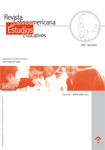Authors
Abstract
Higher education institutions that decided to implement virtual education methodologies have been facing educational content integration processes in order to upload such contents in virtual platforms. The construction of these study materials has presented some drawbacks such as the length of the production process which entails an increase in the hiring budget. These processes implement production phases which are categorized by thematic content authoring, instructional design that directs content to virtuality, a technical development group that develops visual and interactive material, and a quality control process. To solve this situation and try to optimize all these times, this article proposes the design of a content editor that facilitates the management processes needed to carry out the construction of learning objects within a collaborative concept from which specific roles are assigned to a project which range from content authoring to quality control. This allows the implementation of the functions and interaction necessary to perform specific tasks simultaneously, developing a collaborative team work environment in real time of the study contents in an agile manner, thus optimizing production times and delivering quality products in the shortest time under the concept of rapid e-learning.
References
America Learning y Media. (2005). “El rapid e-Learning puede disminuir tiempos y costos de desarrollo”. En: http://www.americalearningmedia.com/edicion-012/142-entrevistas/1189-el-rapid-e-learning-puede-disminuir-tiempos-y-costos-desarrollo
Boehle, S. (2005). “Rapid E-learning”. CEdMA-Europe.
Briceño, L. (2005). DELFOS: Gestor de Contenidos Digitales de la Universidad Peruana de Ciencias Aplicadas. II Jornadas Nacionales de Bibliotecas Universitarias. Trujillo, Perú.
Duart, J.M. y Lupiáñez, F. (2005). Procesos institucionales de gestión de la calidad del e-learning en instituciones educativas universitarias. Colombia: Ministerio de Educación.
Lara, P. y Duart, J. (2005). “Gestión de contenidos en el e-learning: acceso y uso de objetos de información como recurso estratégico”. Revista de Universidad y Sociedad del Conocimiento, No. 2, Vol. 2, pp. 6-16.
MEN. (2007). “Banco Nacional de Objetos de Aprendizaje e Informativos”.
Morales, C. (2006). “La Importancia del Diseñador Instruccional en el diseño de cursos en línea”. Didáctica, Innovación y Multimedia, No. 3.
Moreno C., M. (2006). “Una historia de la educación a distancia en México”. Documento de trabajo para el curso “Teoría y Práctica de la Educación a Distancia”. Sistema de Universidad Virtual, Universidad de Guadalajara. En: http://recursos.udgvirtual.udg.mx/biblioteca/bitstream/123456789/1355/1/Una_historia_de_la_educacion_a_distancia_en_Mexico.pdf
UMNG (2010). “Procedimiento para la producción material académico de educación a distancia”. Universidad Militar Nueva Granada, Bogotá, Colombia.

 PDF (Español)
PDF (Español)
 FLIP
FLIP



















